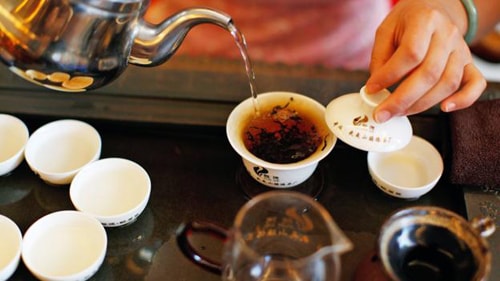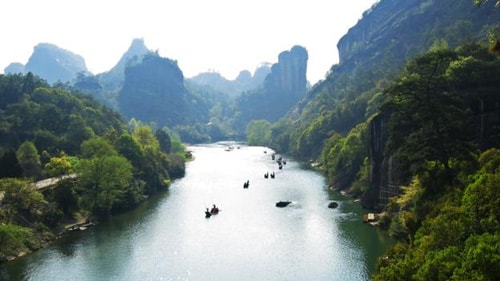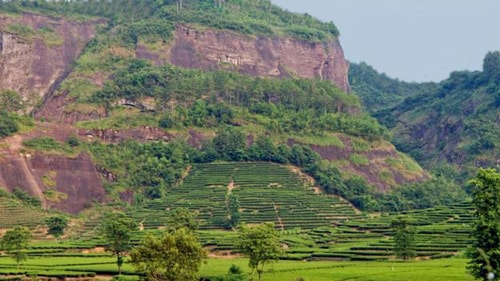Drinks cost dozens of times more than gold
A premium Da Hong Pao teapot can cost up to $10,000.
In 2002, a tycoon paid 180,000 yuan (nearly 28,000 USD) for 20 grams of China's legendary Da Hong Pao tea. Although tea drinking has been an art for more than 1,500 years, the price still surprised many people. Traditional Da Hong Pao tea is not only as valuable as gold, but even 30 times more. One gram of tea costs 1,400 USD, a pot of tea up to 10,000 USD. This is one of the most expensive teas in the world.
 |
A single original Da Hong Pao teapot can cost up to $10,000. |
“They look fit for a beggar, but they cost an emperor and have the heart of a Buddha,” said Xiao Hui, a tea maker in Wuyishan, a riverside town in Fujian, southern China. She showed off Da Hong Pao’s dark, tangled, unfinished leaves from her home garden in Wuyishan. Xiao and her family, generations of tea growers, still go up the mountain every day to call on the tea god Lu Yu to send them new shoots.
The mountain scenery with tea fields has been famous for centuries. Rains pour down the limestone gorges, flooding narrow mountain streams and waterfalls, bringing rich minerals into the water. Today, every shop inWuyi MountainEach has a tea table for the sacrificial ceremony, a ceremony similar to the Japanese tea ceremony.
 |
The poetic scenery in Wuyishan. |
Coming to Wuyishan, visitors will be surprised to find that Da Hong Pao tea can be purchased at many other affordable prices. The old teas, leaves cut from the original tea trees, are rare and expensive. Normally, Da Hong Pao costs about 100 USD per kilogram.
“The original Da Hong Pao tea is very expensive because it is difficult to find a single original tea tree,” explains local tea expert Xiangning Wu. “That ancient version is very valuable, almost priceless.” In fact, tea brokers have connections with China’s super-rich tea connoisseurs to ensure their rare stock is sold.
But it wasn’t just the Chinese who prized Da Hong Pao. In 1894, British botanist Robert Fortune arrived in the Wuyi Mountains on a secret mission as an agricultural spy to steal precious tea varieties. The British had long been obsessed with Chinese teas, but they had been unable to grow tea with such a flavor.
 |
Throughout Fujian province, visitors will come across many terraced tea fields in the mountains. |
The original Da Hong Pao tea trees are grown on the grounds of a temple now owned by the state. Production is tightly controlled, with a few hundred grams of tea produced each year being owned by the state. These days, armed guards are always on duty to protect the precious tea trees. They look very old and gaunt, each tree varying in age.
On May 1st, when the tea harvest begins, a red carpet is rolled out, and beautiful women in traditional costumes walk on it, performing rituals such as presenting gifts to the emperor. However, in reality, there is no harvest. Because the last tea leaves from the ancient trees were last harvested in 2005, and they have not sprouted any more leaves since then. That means that those few grams of tea from that time are more valuable than ever.
According to VnExpress
| RELATED NEWS |
|---|

